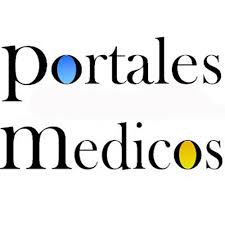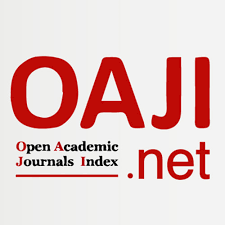Clasificador de Aprendizaje Automático para la Enfermedad Hepática y la Periodontitis Utilizando Parámetros Bioquímicos y Clínicos
Resumen
Introducción: El hígado desempeña un papel crucial en la digestión, el metabolismo y la regulación del colesterol. La periodontitis, una enfermedad oral, se ha relacionado con afecciones sistémicas y podría influir en la salud hepática mediante la inflamación. Objetivo: Este estudio tiene como objetivo investigar el uso de técnicas de aprendizaje automático, específicamente árboles de gradiente ligero potenciados (light gradient-boosted trees), para diagnosticar la enfermedad hepática en pacientes con periodontitis utilizando parámetros bioquímicos y clínicos. Métodos: Se analizaron 325 registros de un Colegio Dental y Médico. Se aplicaron técnicas de preprocesamiento de datos, selección de características y construcción de modelos para predecir el riesgo de enfermedad hepática. Se evaluaron los modelos LGBM, Keras Slim y Bosque Aleatorio mediante precisión y matrices de confusión. Resultados: El estudio realizó un extenso análisis exploratorio de datos para evaluar parámetros bioquímicos y clínicos clave indicativos de la salud hepática. El estudio evaluó la precisión de los modelos de aprendizaje automático—LGBM (Árboles de Gradiente Ligero Potenciados), Keras Slim y Bosque Aleatorio—para diagnosticar la enfermedad hepática en pacientes con periodontitis. Los resultados indicaron altas precisiones de aproximadamente 98%, 84% y 96%, respectivamente, subrayando su potencial para aplicaciones diagnósticas precisas y no invasivas en entornos clínicos. Conclusiones: El estudio destaca el papel significativo de los parámetros bioquímicos y clínicos en la evaluación de la salud hepática dentro del contexto de la periodontitis. Los niveles elevados de estas enzimas indican daño hepático potencial o enfermedades, subrayando su utilidad como marcadores diagnósticos.
Recibido: 19/03/2025
Aceptado: 27/03/2025
Palabras clave
Texto completo:
PDF (English)Referencias
Cao Y, Du Y, Jia W, Ding J, Yuan J, Zhang H, et al. Identification of biomarkers for the diagnosis of chronic kidney disease (CKD) with non-alcoholic fatty liver disease (NAFLD) by bioinformatics analysis and machine learning. Front Endocrinol (Lausanne). 2023;14:1125829.
Park HJ, Park B, Lee SS. Radiomics and Deep Learning: Hepatic Applications. Korean J Radiol. 2020;21(4):387–401.
D’Amico G, Colli A, Malizia G, Casazza G. The potential role of machine learning in modelling advanced chronic liver disease. Dig Liver Dis. 2023;55(6):704–13.
Sangwan A, Tewari S, Singh H, Sharma RK, Narula SC. Periodontal Status and Hyperlipidemia: Statin Users Versus Non-Users. J Periodontol. 2013;84(1):3–12.
Hajishengallis G. Immunomicrobial pathogenesis of periodontitis: keystones, pathobionts, and host response. Trends Immunol. 2014;35(1):3–11.
Liu F, Wang Y, Xu J, Liu F, Hu R, Deng H. Effects of Porphyromonas gingivalis lipopolysaccharide on the expression of key genes involved in cholesterol metabolism in macrophages. Arch Med Sci. 2016;5:959–67.
Bitencourt FV, Nascimento GG, Costa SA, Orrico SRP, Ribeiro CCC, Leite FRM. The Role of Dyslipidemia in Periodontitis. Nutrients. 2023;15(2):300
Aizenbud I, Wilensky A, Almoznino G. Periodontal Disease and Its Association with Metabolic Syndrome-A Comprehensive Review. Int J Mol Sci. 2023;24(16):13011
Kobayashi T, Iwaki M, Nogami A, Honda Y, Ogawa Y, Imajo K, et al. Involvement of Periodontal Disease in the Pathogenesis and Exacerbation of Nonalcoholic Fatty Liver Disease/Nonalcoholic Steatohepatitis: A Review. Nutrients. 2023;15(5):1269
Sato S, Kamata Y, Kessoku T, Shimizu T, Kobayashi T, Kurihashi T, et al. A cross-sectional study assessing the relationship between non-alcoholic fatty liver disease and periodontal disease. Sci Rep. 2022;12(1):13621.
Hatasa M, Yoshida S, Takahashi H, Tanaka K, Kubotsu Y, Ohsugi Y, et al. Relationship between NAFLD and Periodontal Disease from the View of Clinical and Basic Research, and Immunological Response. Int J Mol Sci. 2021;22(7):3728
Yoneda M, Naka S, Nakano K, Wada K, Endo H, Mawatari H, et al. Involvement of a periodontal pathogen, Porphyromonas gingivalis on the pathogenesis of non-alcoholic fatty liver disease. BMC Gastroenterol. 2012;12:16.
Wang T, Ishikawa T, Sasaki M, Chiba T. Oral and Gut Microbial Dysbiosis and Non-alcoholic Fatty Liver Disease: The Central Role of Porphyromonas gingivalis. Front Med (Lausanne). 2022;9:822190.
Kuraji R, Sekino S, Kapila Y, Numabe Y. Periodontal disease-related nonalcoholic fatty liver disease and nonalcoholic steatohepatitis: An emerging concept of oral-liver axis. Periodontol 2000. 2021;87(1):204–40.
Kuraji R, Shiba T, Dong TS, Numabe Y, Kapila YL. Periodontal treatment and microbiome-targeted therapy in management of periodontitis-related nonalcoholic fatty liver disease with oral and gut dysbiosis. World J Gastroenterol. 2023;29(6):967–96.
Csizmadia G, Liszkai-Peres K, Ferdinandy B, Miklósi Á, Konok V. Human activity recognition of children with wearable devices using LightGBM machine learning. Sci Rep. 2022;12(1):5472.
Hu M, Guo L, Liu J, Song Y. Classification and Recognition of Building Appearance Based on Optimized Gradient-Boosted Decision Tree Algorithm. Sensors (Basel). 2023;23(11).
Feng Z, Cai A, Wang Y, Li L, Tong L, Yan B. Dual residual convolutional neural network (DRCNN) for low-dose CT imaging. J Xray Sci Technol. 2021;29(1):91–109.
Wu W, Qu J, Cai J, Yang R. Multiresolution residual deep neural network for improving pelvic CBCT image quality. Med Phys. 2022;49(3):1522–34.
Zhou LQ, Wang JY, Yu SY, Wu GG, Wei Q, Deng YB, et al. Artificial intelligence in medical imaging of the liver. World J Gastroenterol. 2019;25(6):672–82.
Drozdz K, Nabrdalik K, Kwiendacz H, Hendel M, Olejarz A, Tomasik A, et al. Risk factors for cardiovascular disease in patients with metabolic-associated fatty liver disease: a machine learning approach. Cardiovasc Diabetol. 2022;21(1):240.
Vagefi PA, Bertsimas D, Hirose R, Trichakis N. The rise and fall of the model for end-stage liver disease score and the need for an optimized machine learning approach for liver allocation. Curr Opin Organ Transplant. 2020;25(2):122–5.
Chowdhury NH, Reaz MBI, Haque F, Ahmad S, Ali SHM, A Bakar AA, et al. Performance Analysis of Conventional Machine Learning Algorithms for Identification of Chronic Kidney Disease in Type 1 Diabetes Mellitus Patients. Diagnostics (Basel). 2021;11(12):2267
Rassil A, Chougrad H, Zouaki H. Augmented Graph Neural Network with hierarchical global-based residual connections. Neural Netw. 2022;150:149–66.
Ojeda-Pat A, Martin-Gonzalez A, Brito-Loeza C, Ruiz-Piña H, Ruz-Suarez D. Effective residual convolutional neural network for Chagas disease parasite segmentation. Med Biol Eng Comput. 2022;60(4):1099–110.
Liang Y, Peng W, Zheng ZJ, Silvén O, Zhao G. A hybrid quantum-classical neural network with deep residual learning. Neural Netw. 2021;143:133–47.
Hancock JT, Khoshgoftaar TM. CatBoost for big data: an interdisciplinary review. J Big Data. 2020;7(1):94.
P N, P D, Mansour RF, Almazroa A. Artificial Flora Algorithm-Based Feature Selection with Gradient Boosted Tree Model for Diabetes Classification. Diabetes Metab Syndr Obes. 2021;14:2789–806.
Pei X, Deng Q, Liu Z, Yan X, Sun W. Machine Learning Algorithms for Predicting Fatty Liver Disease. Ann Nutr Metab. 2021;77(1):38–45.
Sharma D, Gotlieb N, Farkouh ME, Patel K, Xu W, Bhat M. Machine Learning Approach to Classify Cardiovascular Disease in Patients With Nonalcoholic Fatty Liver Disease in the UK Biobank Cohort. J Am Heart Assoc. 2022;11(1): e022576
DOI: https://www.doi.org/10.53766/AcBio/Se encuentra actualmente indizada en: | |||
 |  |  | |
  |  |  |  |
 |  |  |  |
 |  |  | |
![]()
Todos los documentos publicados en esta revista se distribuyen bajo una
Licencia Creative Commons Atribución -No Comercial- Compartir Igual 4.0 Internacional.
Por lo que el envío, procesamiento y publicación de artículos en la revista es totalmente gratuito.



